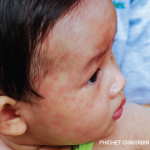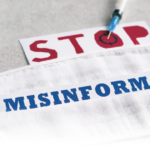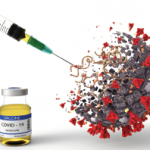Although overall MMR vaccination rates in Texas are about 94%, in Gaines County, the location of the Mennonite community, overall rates are 82%. Most public schools nationwide require some sort of mandatory vaccine schedule, including MMR, with some state exceptions for medical conditions or personal beliefs. Vaccination rates for home-schooled or private school students may be much lower.12,13
Kevin Winthrop, MD, MPH, a professor of public health and infectious diseases at Oregon Health and Science University, Portland, notes the true numbers of cases are probably much higher than the officially confirmed cases would indicate because many patients may not come to medical attention.
“If measles gets into a pool of people where there’s little vaccination,” says Dr. Winthrop, “it’ll spread like wildfire.”
In the webinar, Dr. Salmon expressed concern that if we were to reach a point of widespread community transmission it would be very hard to eliminate the disease again. “We could see substantial morbidity and mortality,” he said. “So I’m quite worried.”
Management Considerations
With respect to prevention and management of measles infections, many of the recommendations for the general population also apply to people with rheumatologic diseases. One important caveat is that certain rheumatology patients should not receive live vaccines such as the MMR, out of concern for vaccine-associated illness.
Assess Immunity & Vaccination Status
Dr. Winthrop notes that in light of media coverage of measles, many rheumatology patients are concerned about their immunocompromised status. They’re asking whether their vaccinations are up to date and wondering if they may need revaccination.
“If someone hasn’t been vaccinated before, now is a good opportunity to do that,” says Dr. Winthrop. However, he notes, in most circumstances, practitioners can reassure previously vaccinated patients that neither re-vaccination nor retesting immunity via IgG titers is necessary. “If a patient [were at] high risk for exposure, like a healthcare worker in the heart of the outbreak in Texas, I would certainly check titers and make sure they’re adequate, and if not, give them a booster,” he says.
Dr. Calabrese does not routinely recommend IgG titers to check for immunity status in patients with documented, appropriate MMR vaccination because the test may underestimate the level of immunity actually present. “The vast majority of our patients are protected against measles, either [they] had measles as a child or [were] appropriately vaccinated. It just comes down to figuring out their vaccine and natural immunity history,” she says. “But I would caution patients not to travel to areas of active outbreaks.”




